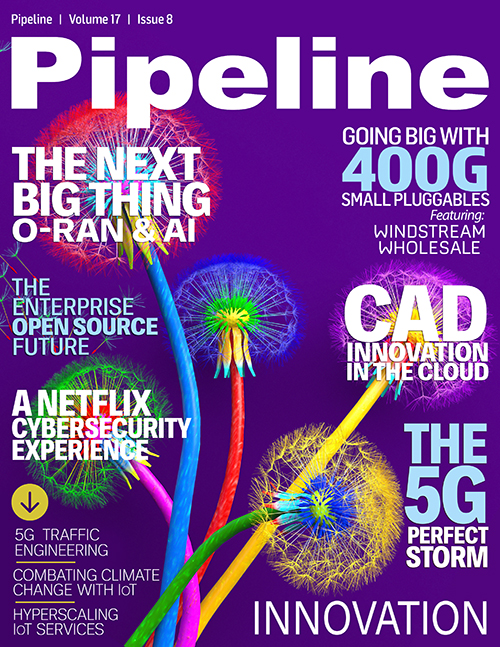A Stormy 5G Transformation Forecast
By: Steve Douglas
.jpg)
It’s no secret that 5G would introduce a world of change to telecom networks. But it’s safe to say it wasn’t expected to come surging in all at once. Blame a pandemic, increasing competitive pressures and an urgency to capture new revenues for the latest whirlwind of complexity surrounding wireless operators. What’s the solution to this onslaught of innovation pouring into networks? More innovation.
If 2020 was all about a rush to rollouts, 2021 will see a focus to keep them on track. For operators, that means sorting tech challenges, embracing operational efficiencies and lining up a parade of new partners to play important supporting roles. Behind the scenes, automation, continuous testing, active testing and managed solutions will be critical drivers of success.
A ‘perfect storm’ showering opportunity
Consider the ascendant trends operators face in this moment. The sheer volume and velocity of software and configuration changes being propelled onto networks is explosive. Cloud players are positioned as partners but also competitors, constantly keeping operators on their toes. Unrealized consumer 5G demand is forcing a faster-than-expected pursuit of enterprise deals. A live 5G device ecosystem is introducing new capabilities, data traffic patterns and consumer behavior shifts. An intense focus on the 5G core is developing following the realization that 5G non-standalone (NSA) just won’t cut it on performance. And speaking of performance, attention is shifting to the edge for lower latencies to meet vertical market needs.
It’s enough to make your head spin. Yet, hidden within the ‘perfect storm’ of complexity lies unprecedented opportunity. Unlocking it though, will prove to be operators’ greatest challenge.
Luckily, the pandemic’s acceleration of trends around automation, assurance and managed solutions has positioned operators to meet this overly demanding moment. Suddenly, staff are at home, forcing teams to scour for remote solutions to routine network management requirements. Fast-evolving cloud trends require new expertise and skillsets that managed solutions could address. More virtualization, more endpoints, more third-party software and equipment are hitting networks, necessitating adoption of automation.
In many ways, operators don’t really have a choice. While all these technologies have been on the roadmap, they’re now requiring prime-time utilization, in some cases years ahead of what had been planned. The good news is that these new innovations are proving to be successful in helping to weather the perfect storm, a Pandora’s box that can’t be closed.
In the past year, we witnessed the dawn of the next generation of innovation that will guide operators on their 5G journeys. There appears to be no end in sight for the flurry of tech headed at operators. There’s never been a time when they’ve faced so much that is so new: new radio capabilities, new frequencies, new delivery methods and new vendors. On the vendor front, compelling new Open RAN initiatives also introduce heightened risks. Interoperability will be a challenge. Security will demand excessive scrutiny. Operators are a far cry from when vertical hardware stacks from a single vendor ruled the day.
A snapshot of next-gen network innovation
In our second annual 5G report exploring key market drivers, insights and considerations, we offer a snapshot of the data behind the more than 600 new 5G deals we struck. Eighty percent of our assurance business is now 5G-driven, with that part of the overall business increasing exponentially over 2019. 5G core testing (and all the aforementioned complexity that comes with it) is now a dominant part of our test and validation business. These trends showed only as blips in the tracking done for our 2020 report.
Emerging innovation from these developments and others discussed in this article represent a procession of next-gen innovations that will play significant roles in nascent 5G networks.



















